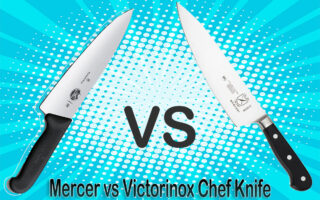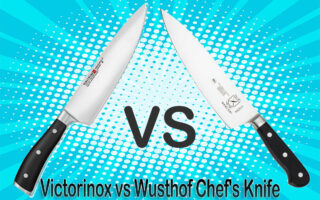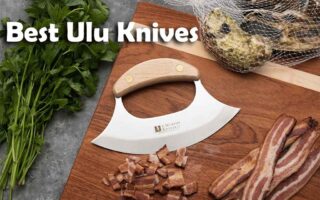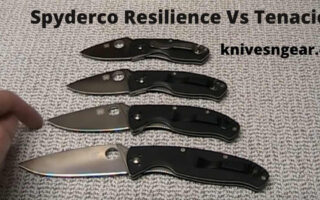The Nakiri and Usaba are the most popular Japanese knives. They are excellent for handling vegetables. But they are both specially designed for certain cases. If you are in search of the best one for you, look no more!
In this Nakiri vs Usuba: in-depth comparison guide I will be detailing their A-Z properties and where they are recommended.
Read on to know which one of them suits your needs.
Specification of Nakiri and Usuba
| Aspect | Nakiri Knife | Usuba Knife |
| Blade Material | Carbon steel, stainless steel, high carbon stainless steel, Damascus steel | Carbon steel, stainless steel |
| Blade Shape | Double-edged, rectangular with a flat edge and squared-off tip | Single-edged, rectangular with a concave grind on one side and a flat back |
| Weight | Typically 150-300 grams (5.3-10.6 ounces) | Normally 100-200 grams (3.5-7 ounces) |
| Primary Use | Regular vegetable-cutting tasks | Specialized vegetable work |
| Bevel Type | Double bevel | Single bevel |
| Sharpness | Good sharpness, suitable for various skill levels | Superior sharpness requires skill and expertise |
| Ease of Use | Forgiving, easy to handle | Requires skill and precision |
| Maintenance | Requires proper care to prevent rust | Requires diligent maintenance to prevent rust |
| Price Range | $30-$100 (entry-level) to $300 and above (high-end) | $50-$150 (entry-level) to $500 and above (high-end) |
| Skill Level | Suitable for both beginners and experienced cooks | Preferred by skilled chefs in Japanese cuisine |
| Vegetable Types | Versatile, can handle a wide range of vegetables | Specialized for delicate and intricate vegetable work |
| Durability | Durable, suitable for heavy-duty use | Durable, suitable for professional kitchens |
| Maneuverability | Less maneuverable due to weight | Agile and precise for delicate cuts |
| Design and Aesthetics | Wide variety of designs and aesthetics | Often showcases traditional Japanese craftsmanship |
| Cooking Style | Suitable for various cooking styles and cuisines | Primarily used in Japanese cuisine |
Nakiri Vs Usuba: In-Depth Comparison
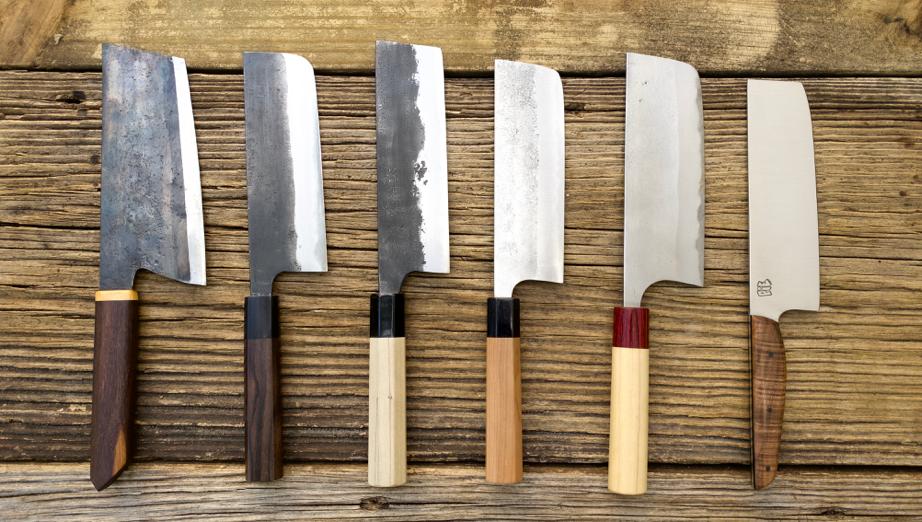
Let’s see the key differences between these Japanese beauties.
Usage
If you know the primary use you can pick one easily. It will help you to understand what suit your preference, Nakiri or Usuba
Nakiri vs Usaba
It has got a flat edge with a straight blade. You can easily cut through various types of vegetables.No matter whether you want cutting, dicing, or slicing Nakiri certainly eases the job.
Nakiri is best for push-cutting vegetables. If you are cooking vegetable-centric dishes at home you should go for Naikiri. It allows you to cut vegetables and have fun with minimal skill levels.
Usuba is a single-blade-edged knife. It helps to gain immense control over the knife. They are actually designed for professionals of Japanese cuisine.
However, you can have one if you are willing to decorate your dishes. Usuba is best for thin slices and decorative cuts. They come in handy when cutting vegetables like carrots or cucumbers.
But the Usaba needs skillful hands. Chefs learn to handle these knives with years of practice.
Blade Material
Both the Nakiri and Usuba are made of medium to higher-grade steel.
Nakiri vs Usuba
Nakiri manufacturers use various steel for making knives. Carbon steel, Damascus, and stainless steel are mostly found.
These knives are durable and resist corrosion depending on the raw material. Nakiri is easy to maintain.
Usuba knives are usually made of high-quality carbon steel or stainless steel. Carbon steel blades are effective for precision vegetable work because of their sharpness and edge retention.
They do need regular maintenance to avoid corrosion. Stainless steel blades are appropriate for busy kitchen situations due to their endurance, corrosion resistance, and ease of maintenance.
Blade Shape
of a knife heavily decides how it is going to perform. Both knives are well shaped for expertise in particular cutting.
Nakiri vs Usuba
The Nakiri knife features a double-edged, rectangular-shaped blade with a flat edge and squared-off tip. The straight edge of the blade makes it easy to achieve consistent cuts. The squared-off tip enables precise control when working with intricate vegetable shapes.
Usuba knives have a single-edged, rectangular blade. It has a concave grind on one side and a flat back. The concave grind is known as “Urasuki”.
It creates a thinner edge that helps precise cuts and thin vegetable slices. The flat back of the blade allows for stability and control while cutting.
Blade Weight
You don’t want heavier or lighter blades for smooth cutting. Balanced blades are always best for cutting.
Nakiri vs Usuba
Nakiri knives tend to have thicker blades and more heft than Usuba knives. The added weight provides better stability and power during cutting tasks.
This is what makes them suitable for vegetables. The weight of Nakiri knives ranges from 150-300 grams (5.3-10.6 ounces).
On the other hand, Usuba knives are generally lighter compared. They are designed to be agile and precise for delicate vegetable work. The weight of Usuba knives typically ranges from 100-200 grams (3.5-7 ounces).
Blade Length
A blade should not be much longer. Long blades can reduce your control over the knife.
Nakiri vs Usuba
Nakiri knives commonly range from 150 to 180 millimeters, that’s 5.9-7.1 inches. The overall length, (with the handle)can range from 290 to 320 millimeters means 11.4-12.6 inches.
The blade lengths of Usuba are mostly 180 to 210 millimeters (7.1-8.3 inches). Where the total length ranges between 320 to 350 millimeters (12.6-13.8 inches).
Bevel
Now bevel is something that ensures sharpness, proficiency, and maintenance. So let’s take a quick peek.
Nakiri vs Usuba
Nakiri blades typically have shaped edges on both sides. So they are V-shaped blades that are called the double bevel.
The double bevel feature makes Nakiri easy to use. It is a complement to your kitchen no matter if you are a home cook or professional.
But the Usuba has got a flat edge. It is a single-level knife. The single bevel gives you perfect control over the knife with immense sharpness. However, you have to be an expert to handle an Usuba knife properly.
Handle
You can not love a knife without an excellent grip. And the grip depends on the handle material and size.
Nakiri vs Usuba
Nakiri knives include Western-style handles. They are crafted for a comfortable grip and easy maneuverability. These handles are mostly made of wood, plastic, or composite materials.
Western handles are shaped to fit the contours of the hand. They usually have a full tang construction. The blade extends through the entire handle for balance and stability.
Wa handles are featured in the Usuba. They are traditional Japanese handles These handles are made of magnolia or ho wood. So they are lightweight and offer a natural grip. The Wa handles are generally cylindrical. These handles ensure a comfortable hold for precision cutting.
Price
This blog on Nakiri vs Usuba: in-depth comparison cannot be complete without the price section. So here it is folks.
Nakiri vs Usuba
You will find both the Nakiri and Usuba knives at lower to higher prices. They usually cost $50-500. The price varies depending on the manufacturer’s brand, quality, and craftsmanship. You will notice Usuba knives are a bit higher priced than the Nakiri.
Nakiri vs Usubu: Best Knives
Here is a list of my personal favorite Nakiri and Isiba knives. Actually, most of consumers are happy with the following models:
Best Nakiri Knives
1. Shun Classic Nakiri Knife
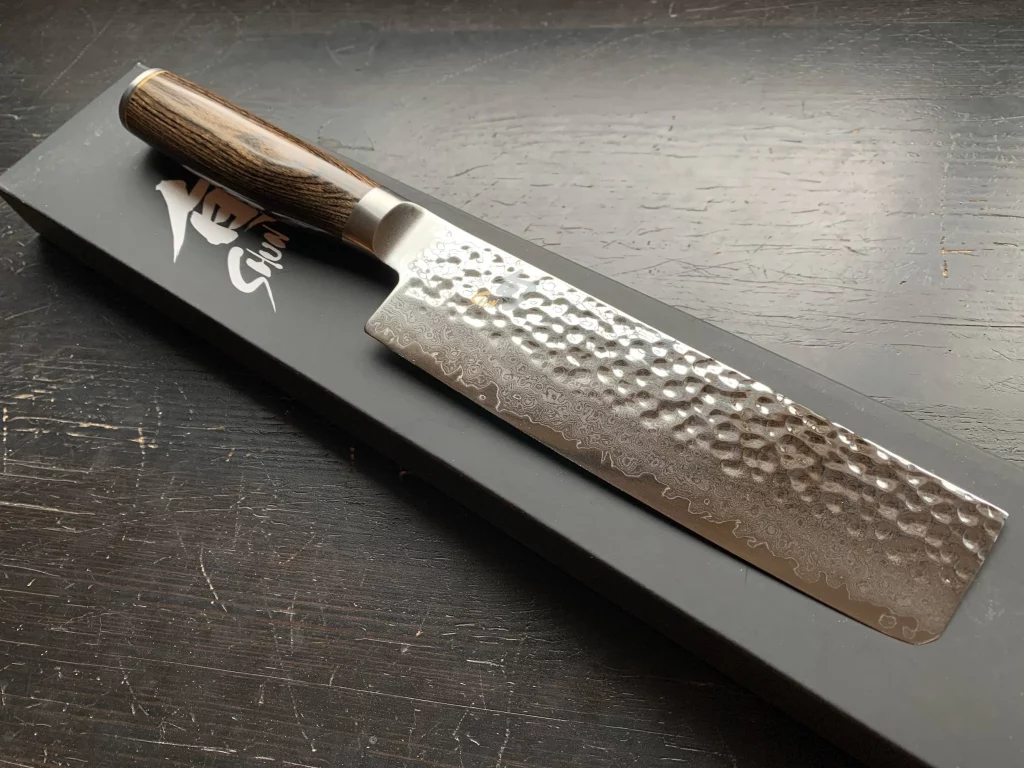
This knife features a high-quality VG-MAX stainless steel blade with a razor-sharp edge and a beautiful Damascus pattern. The ergonomic handle provides comfort and control during use.
2. Miyabi Koh Nakiri Knife
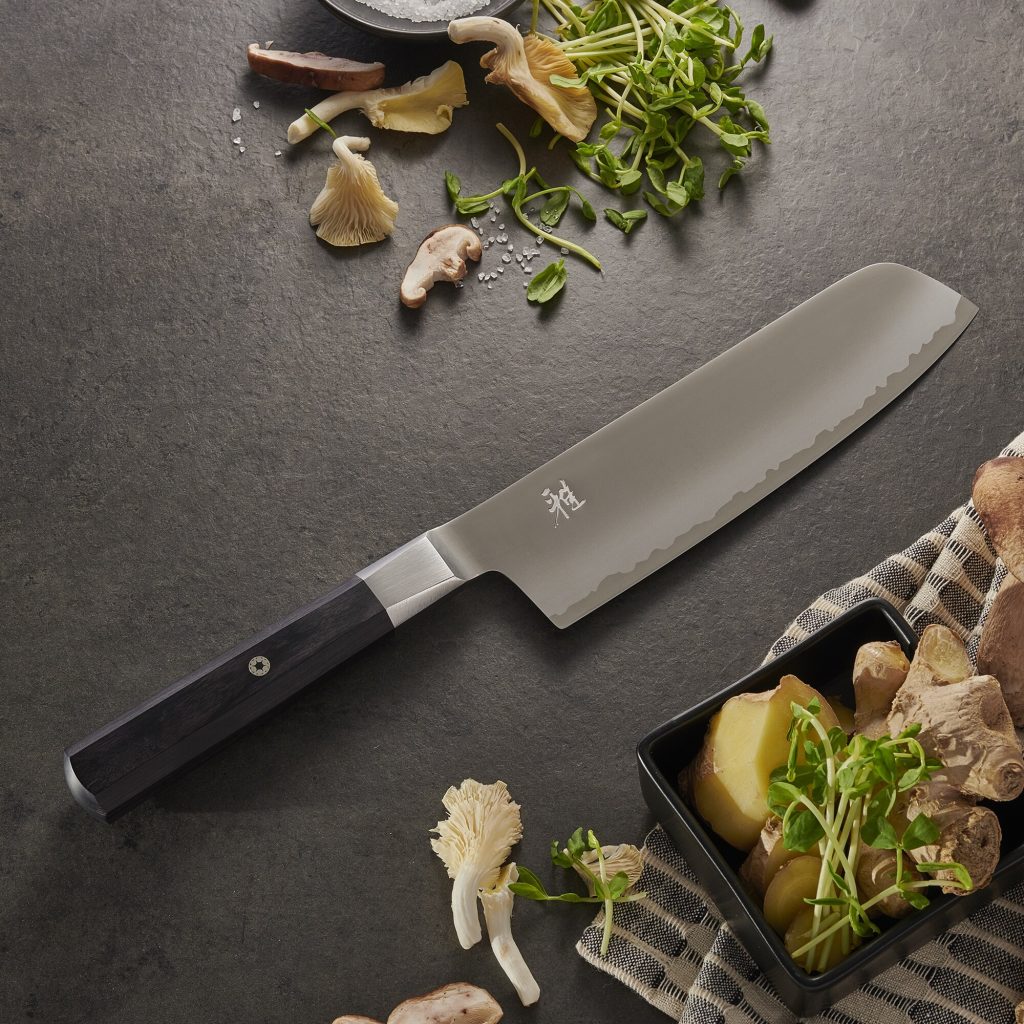
Crafted with a VG10 stainless steel core, this knife offers excellent sharpness and durability. The elegant design, combined with a comfortable handle, makes it a popular choice among chefs.
3. Wusthof Classic Nakiri Knife
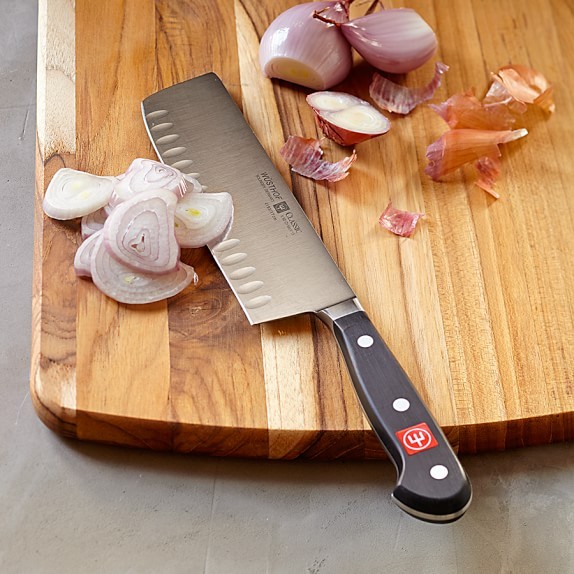
Known for their German craftsmanship, Wusthof knives are renowned for their durability. The Classic Nakiri Knife features a precision-forged high-carbon stainless steel blade and a comfortable handle for efficient vegetable preparation.
Best Usuba Knives
1. Yoshihiro Hongasumi Usuba Knife
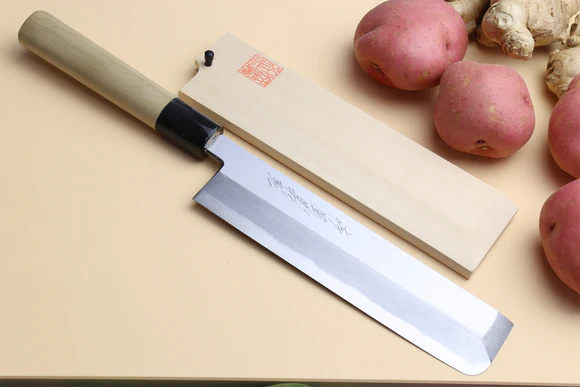
Handcrafted in Japan, this knife is made from high-carbon blue steel, known for its exceptional sharpness and edge retention. The traditional single-bevel blade and the octagonal handle provide an authentic Japanese knife experience.
2. Shun Premier Usuba Knife
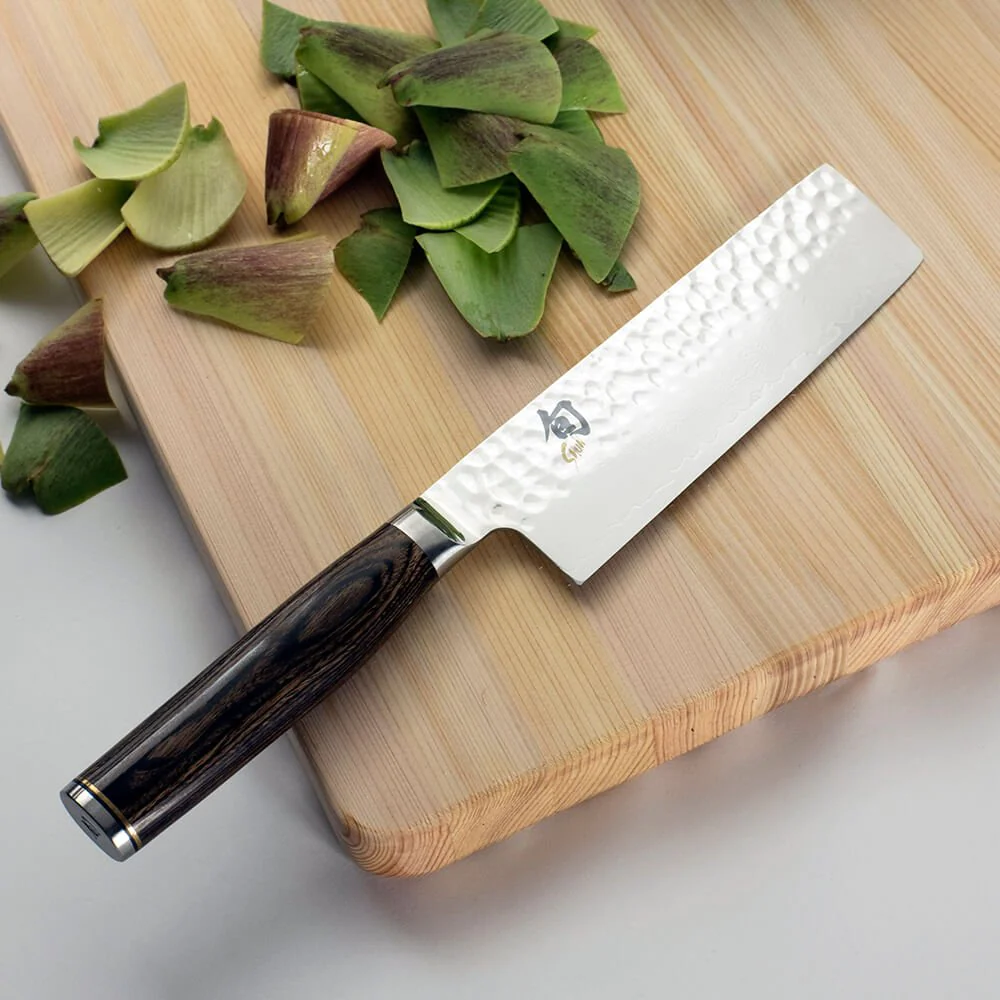
With a hammered tsuchime finish and a VG-MAX stainless steel blade, this knife combines stunning aesthetics with impressive performance. The contoured handle ensures a comfortable grip and precise control.
3. Tojiro DP Usuba Knife
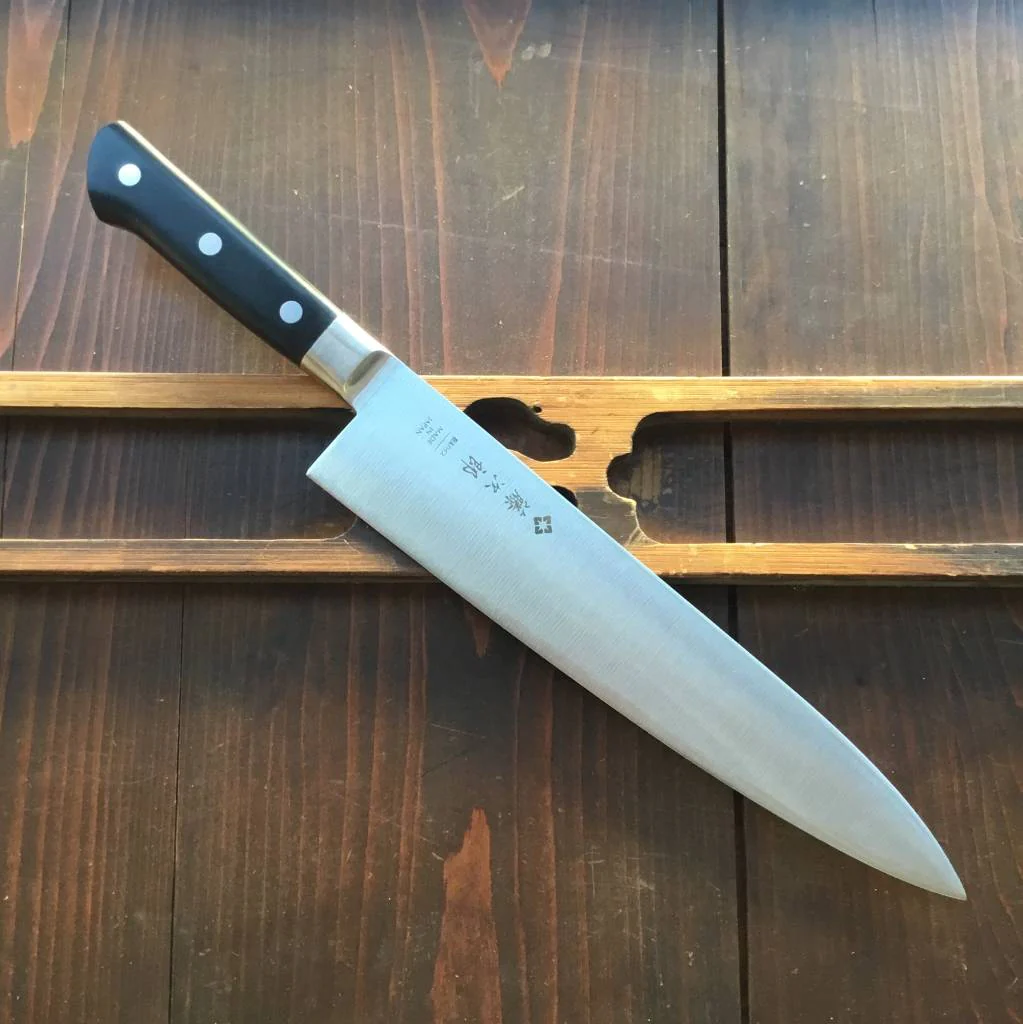
This budget-friendly option offers a VG10 stainless steel core with a durable and easy-to-maintain blade. The ergonomic handle provides a secure grip and makes it suitable for professional chefs and home cooks.
Conclusion
This article should clear all your doubts about your best pick. Think all over again about what you are looking for. When you find out your requirements it will be an easier decision to make.
Enjoy your kitchen life with your kind of knives!
FAQ
1. Which knife is better for beginners, Nakiri or Usuba?
Nakiri knives are considered more forgiving and easier to handle. Surely Nakiri is the sweetest for beginners.
2. Can I use Nakiri or Usuba knives for other tasks besides vegetables?
Yes, you can use them for other tasks like slicing boneless meats or fruits. However, their blade shapes and specialized designs make them most effective for vegetable work.
3. Do Nakiri and Usuba knives require different sharpening techniques?
Yes, Nakiri and Usuba knives have different blade profiles and bevel types. So you will require different sharpening techniques.

Hi, my name is Taras Kulakov and I’m a knife enthusiast. I have been collecting knives for over 30 years and I’ve owned literally thousands of different models over that time. My goal with this site is to share some of what I’ve learned about knives. You can find more info about Taras Kulakov here.

